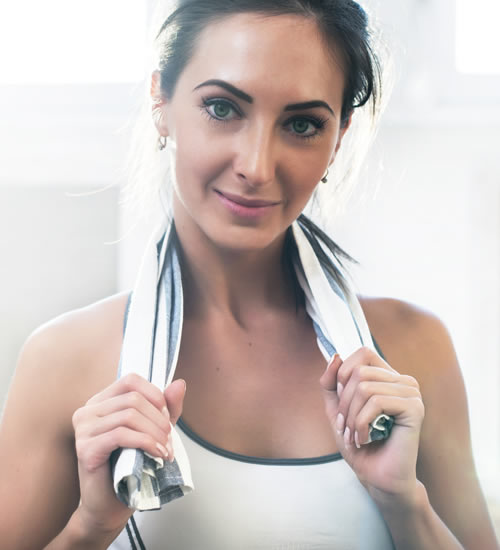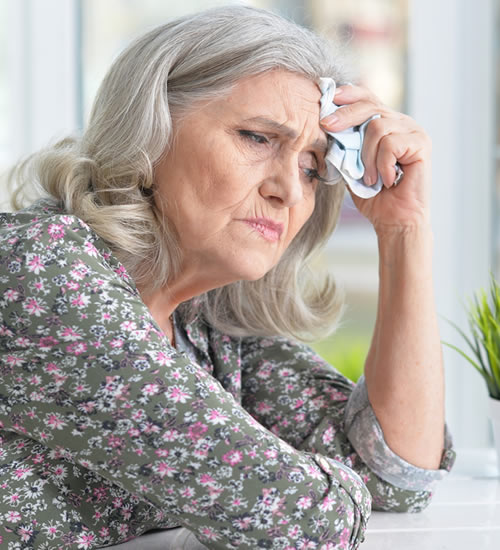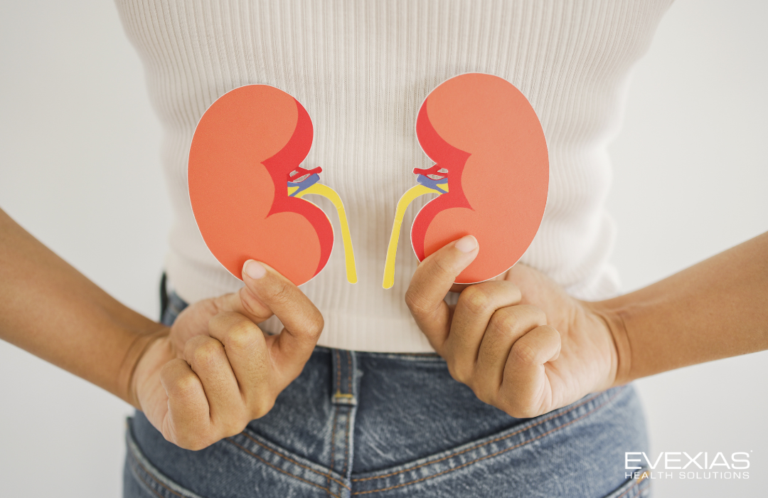Women need Testosterone as much as men do

Do you know the symptoms of low testosterone in women? When it comes to hormones, many people associate women with estrogen and men with testosterone. But the reality is our bodies need both hormones for proper function.
Another fact is low testosterone is also a women’s issue. And while many may not be aware, a woman with low testosterone may have serious health consequences and symptoms.
FACT: A woman will produce more testosterone in her lifetime than she will estrogen.
If this is new information to you, read on. We will be going over the symptoms of low testosterone in women. Right now, we will break down what:
- Low testosterone means for women
- Common signs of low testosterone in females
- Treatment options are available
Low Testosterone in Women and What It Means
What is the normal level of testosterone in a woman? Women don’t naturally have as high levels of testosterone as men, true. But, there are severe physical and emotional repercussions that can occur if levels are not balanced. The real truth is that every woman is different and normal can be really high for some and really low for others. The key question should be “How do you feel?”
Testosterone is part of a group of hormones called androgens, and they help regulate a few important things, like:
- Red blood cell production
- Fertility
- Sex drive
The guidelines surrounding a “normal” amount of testosterone differs. But, it is true that a woman’s testosterone levels change naturally throughout different times, like during menstrual cycles, or even just throughout the day.
Low testosterone in women often stems from issues with their ovaries, the pituitary or adrenal glands.
But, most women are diagnosed with low testosterone around the time menopause begins. As women age, ovaries will produce lower levels of hormones and estrogen, and testosterone are typically the first to decline naturally. This decline can even be triggered earlier in life as well if a woman has PCOS or develops some form of metabolic syndrome. Odds are that if you are or have accumulated fat around you midsection, you most likely have some sort of Hormone Imbalance.
Some symptoms of low testosterone in women include:
- Fatigue
- Decreased sexual satisfaction
- Weight gain
- Reduced sex drive
- Fertility issues
- Muscle weakness
- Loss of bone density
- Vaginal dryness
- Sleep disturbances
- Irregular menstrual cycles
- Sluggishness
Can you identify with any of the above symptoms? These are directly related to Low Testosterone in Women. It’s worth speaking to your healthcare provider so you can get on an appropriate treatment plan and get back to feeling your best!
What is average testosterone level by age?

You may also be asking what is the normal free testosterone levels in females? If we are going try and determine what the average testosterone levels are by age, we can pull blood levels from an age group of women. Let’s say we pull testosterone levels from 5000 women that fifty years old. What will we get? For one, if all of the women are not on Hormone Replacement Therapy, what you will get is an average Testosterone Level that is spread across 5000 unhealthy 50 year old women. What was your Testosterone level when you were 18? That is really the question we need an answer to. Think about it, at 18 you felt amazing, you most likely couldn’t gain weight to save your life. You were healthy and the symptoms of aging were largely not effecting your body because you were producing ample amounts of every hormone your body needed. As we age, the wheels start falling off.
So let me ask you…why do you want to know what normal is? Do you want a “normal” level based on your age group or a level based on when you were the healthiest. By optimizing your hormones until you feel good, you will find your levels will end up around where they were when you were 18.
Whether you use free testosterone levels or total testosterone, you need to base where your levels need to be on how you feel and whether or not you get symptom relief.
If you have receptor site issues or have a large amount of Sex Hormone Binding Globulin (SHBG) in your bloodstream binding itself to any free testosterone floating around, you will not be able to get much symptom relief until you are given more testosterone. This is often scary for most untrained providers because the Total Testosterone may look abnormally high. This is not a problem when the SHBG is high because any excess will be bound and not effect the Free Testosterone. You can think of SHBG like a wall that the Total Testosterone has to stack up enough to get over the wall into the FREE Testosterone side.
Often times, providers use Tanner Staging scales to follow a females path from Puberty to adolescence. This has been used by some to determine normal testosterone levels in females nmol/l. While this can give a frame of reference, regardless of what the lab panels show, we need to be able to answer whether or not you have symptom relief or not. If not your provider may raise your levels until you feel good.
Tanner Staging: https://www.ncbi.nlm.nih.gov/books/NBK470280/
| Tanner stage | Female (in ng/dl) |
|---|---|
| I | Less than 7-20 |
| II | Less than 7-47 |
| III | 17-75 |
| IV | 20-75 |
| V | 12-60 |
Seeking Help From Established Hormone Specialists
Research around testosterone and women is still limited and varies between medical practices. This reason is why you want to seek treatment from established hormone specialists if you are concerned, you may be dealing with these issues.
To diagnose low testosterone in women, your certified medical provider will start with a physical exam and ask about symptoms.
We may order blood tests. And if you have not yet reached menopause, your provider will advise you on the best time to test testosterone levels. The reason for this is because of the fluctuation experienced around menstruation.
Do I need a specialist? An EvexiPEL Certified Medical Provider?
YES! Absolutely! This makes sense once you understand that in medical school, doctors are trained less than 4 hours on hormones. It seems like it would be common sense to spend a lot more time than that given that hormones are the chemical messages that give your cells, organs, bones and nerves critical instructions on how to protect and heal. Because of this there is a fear among many providers jumping into hormonal issues. For women it is devastating because a provider that is not educated or certified through EvexiPEL may try and figure out how to lower testosterone in women. Many will use synthetics because that’s what Big Pharma has lobbied every Medical Board out there and providers are indoctrinated to write scripts rather than find out what the root cause is.
An Integrated Approach to Hormone Therapy
BHRT is a type of hormone therapy that uses hormones that are structurally identical to the substances as they naturally occur in your body. It has been a favorite for both men and women going through the aging process and dealing with hormonal imbalance.
Other hormone therapy options include pills, patches, and creams, but don’t offer an individualized approach for your unique needs and health concerns. BHRT is the natural alternative to synthetic hormone treatments that often don’t provide relief.
We use BHRT through hormone pellet therapy. Hormone pellets have been around for decades but were pushed aside when pills and patches flooded the market.
However, many practitioners are turning back to hormone pellet therapy to offer their patients a more individualized approach to restoring balance and optimizing hormones.
Which Hormone Replacement Therapy is Best for Me?
How do increase testosterone in women?
With various options and tons of information out there, it can be a lot of pressure deciding which method is the best for you. Take some time to read through these FAQs to get a better idea of what hormone pellet therapy is all about and how it can help you. For more information, read our blog post on Hormone Replacement Therapy: Is It Right for You?.
1. What are hormone pellets?
Designed for both men and women, hormone pellets are roughly the size of a grain of rice and composed of an estrogen hormone or testosterone.
They come from organic plant materials that mimic the molecular structure of those hormones found in the body. And, these tiny pellets are inserted under the skin, usually in the buttocks, in a simple and painless in-office procedure.
2. How do BHRT pellets work?
The pellets release small amounts of hormones directly into the bloodstream similar to the way your body would in previous years.
Also, the pellets will release the hormones in response to physical activity or emotional stress, both the good and bad kind. They also allow for a steady stream of hormones, which can help curb symptoms and side effects of your hormone levels.
3. What are the pros of hormone pellets?
BHRT with pellets is preferred by many patients thanks to its incredible convenience. Rather than remembering to take daily pills or apply cream throughout the day, most patients need only to visit their practitioner 2-3 times per year for pellet implants. With hormone pellets, you can truly restore order to your life!
4. Are there any cons of hormone pellets?
For some patients, the idea of a procedure can be scary. Though the insertion method is painless and straightforward for most, there is always a possibility for discomfort.
Also, there is a little downtime required post-insertion; you should not practice any strenuous physical activity or have prolonged water exposure for the first few days after implantation.
Finally, BHRT with pellets can be slightly more expensive than other forms of hormone therapy, but it is also recognized as more reliable and valuable.
Meet With Us Today to
Do you experience the effects of Low Testosterone in Women? Meet with an EvexiPEL provider today!
Providers following the EvexiPEL method will seek out the root cause of your health issues. They will guide you through a natural and safe customized treatment plan.
The EvexiPEL method is an evolved hormone pellet therapy. The therapy uses all-natural and plant-based bio-identical hormone replacement therapy (BHRT) with pellets to help you address health concerns and optimize hormones.
You can find your nearest EvexiPEL provider here and learn more about the EvexiPEL method here!
Resources
Article Reviewed By The Medical Faculty and Advisory Review Board







